Low protein foods for dogs
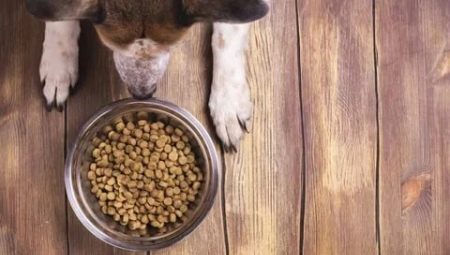
What are the features of low protein dog food? Why should it be reduced in the pet's diet, if protein is the main material of muscles, cells, enzymes? Few people know that a lack, as well as an excess of protein, provokes health problems in a dog.
Peculiarities
As you know, the main building material for muscles, tissues and enzymes is protein. The most effective and necessary for the dog is protein of animal origin. Lack of protein in the dog's diet is fraught with impaired growth and depletion of the animal, deterioration of the skin and fur.
However, too much protein is dangerous for the health of the animal. First of all, this is reflected in the condition of the joints - arthritis and arthrosis appear. The liver and kidneys also receive excessive stress, which leads to the appearance of edema.
Recently, the analogue of the term "protein" is the concept of "protein", which is, in principle, permissible. Protein is high quality pure protein. Therefore, in this article, these 2 concepts will be used as equivalent.

Healthy adults require 4.5 grams of pure protein per kilogram of body weight. For puppies during the growth period, this indicator doubles and is 9 g for each kg of weight. On average, the amount of protein in the daily menu of a healthy dog is up to 35-40% of the daily requirement.
Hunting, sled, and service dogs require more protein - an additional 30% should be increased. During pregnancy and lactation, the body of females also requires an increased amount of protein - it should be increased by 10-20%. A similar increase is required for the animal during the recovery period after illness.
However, in some cases, not an increase, but a decrease in protein in the dog's diet is required, primarily in case of kidney disease.
Cutting back on protein is also worthwhile for older dogs - their bones and joints already require a lot of attention. Protein in their menu can lead to even greater problems with the skeletal system and joints.
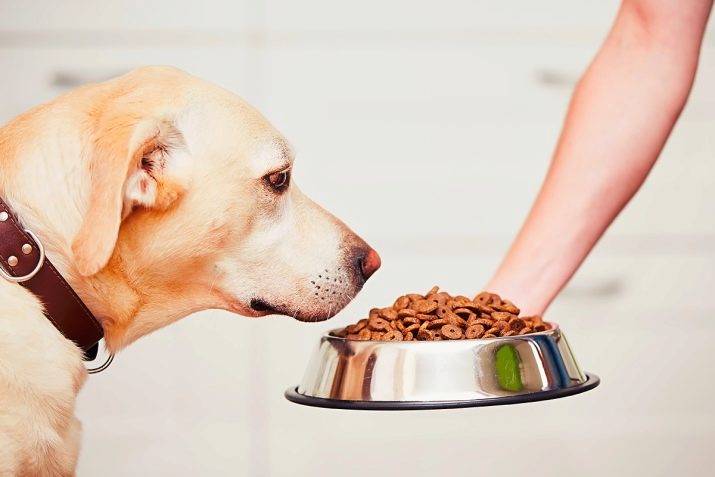
Finally, the low-calorie, minimal protein feed is intended for animals that are allergic to animal protein. It is necessary not only to reduce its consumption, but also to use hypoallergenic meats - rabbit, lamb, duck.
For the described category of dogs, so-called low-protein foods are suitable. The protein content in them is no more than 18-22%. There are options in which the indicator of this ingredient is reduced to 8%.
An important point: low-protein feed should not be used for feeding lactating dogs, puppies. During this period, on the contrary, an increase in the amount of protein they consume is required. However, if for health reasons this is unacceptable, you need to choose a medicinal product, but only after consulting a veterinarian.
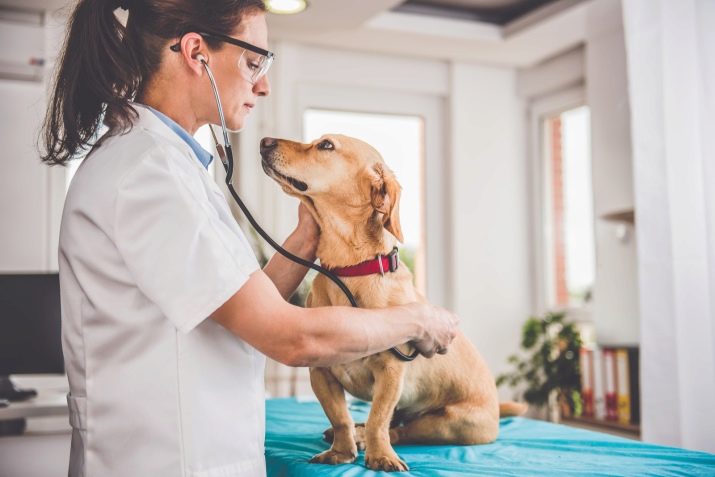
Advantages and disadvantages
The main benefit of a low-protein feed is the ability to keep your pet healthy. In most cases, the consumption of a standard portion of protein in animals with health limitations is fraught with seizures and reduced lifespan.
If we talk about therapeutic low-protein options, then their composition is enriched with vitamins, trace elements and other useful components. This is additional support for the dog's body.
The disadvantage of low protein products is obvious - it is not suitable for every group of animals. For example, when feeding such products to puppies, pregnant and lactating females, a deficiency of protein in their body is possible, as a result - weakness, lag in growth and development (puppies). However, if the pet is sick, then you cannot do without low-protein products, but a veterinarian should pick it up and monitor the pet's health.
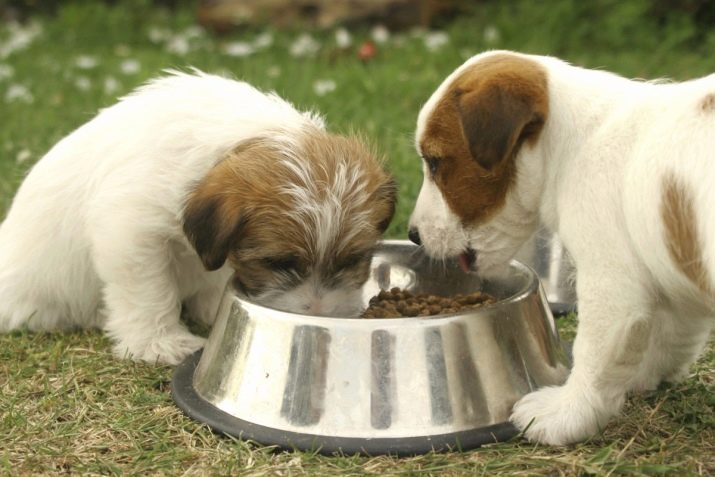
It is important not to confuse low-protein feed varieties with economy-class products. Protein, even with a reduced content, should be complete (of animal origin) and high quality (from meat or fish, plant ingredients).
The disadvantage of low-protein medicinal feeds is the higher cost, it is also not always easy to find them in the public domain.
Views
Depending on the composition and nutritional value, all feed can be divided into several types.
Economy class
The most affordable types of feed. The main ingredient in them is vegetable protein. A small amount of animal protein is obtained from veins, scraps, bone meal, carcasses of dead animals. In economy class products, the amount of protein is low, however, there is no nutritional value in such feed.
In addition, they have a high content of allergenic wheat, corn, soybeans, and a high percentage of animal fat.
Eating such food, the animal will either overeat or constantly feel hungry. This is due to the fact that economy class products do not have a suitable nutritional value.
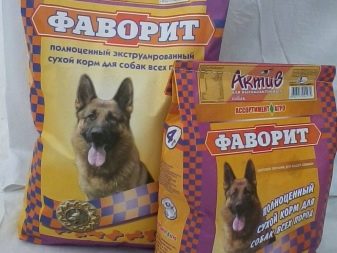
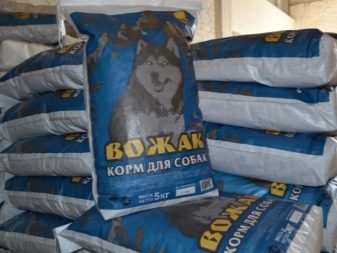
The disadvantages include the presence of flavorings, preservatives and flavor enhancers in the composition. Veterinarians agree that these foods are not suitable for dogs and are not intended to be fed continuously.
Premium class
The protein content in this product reaches 30-33%, in general it is a high-quality animal protein with a small (within the normal range) amount of vegetable. The composition is supplemented with oats, wheat, vegetable oils are used as sources of fat, sometimes animal fat. The level of preservatives in these formulations is also within the normal range, in most cases, no flavors are used. Some formulations are enriched with vitamins and minerals.

Super premium class
In such compositions, the amount of animal protein is in the range of 40-45%, vegetable protein is absent.The manufacturer uses high-quality protein, rice, oats, buckwheat recommended by veterinarians are used as a source of carbohydrates. The composition contains fats, vegetables, herbs, as well as vitamins and minerals. There are no colorants or flavors. It is natural that high quality products have a fairly high cost, but they provide the pet with energy, demonstrate a balance of proteins, carbohydrates and fats.
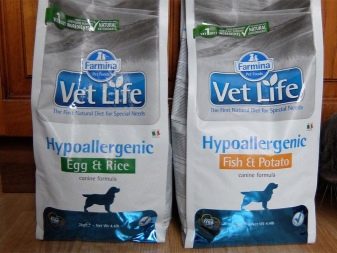
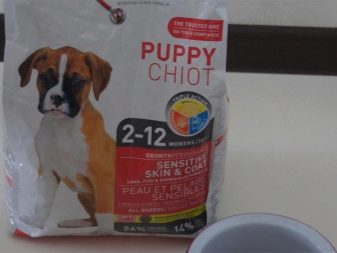
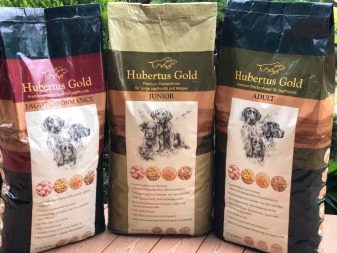

Holistic
Recently introduced, but considered the most useful for a pet, types of food. They differ in the highest quality and natural composition (according to the assurances of the manufacturers, the raw materials for these feeds can be safely used to feed people).
However, for animals in the diet of which it is necessary to reduce the amount of protein consumed, holistics are infrequent. This is due to the high protein content in them, because up to 90% of their composition is high-quality meat or fish. Although in terms of their balance, benefits and environmental friendliness, holistics occupy a leading position among other feeds.
Treatment lines can be found in almost every food group. Depending on the purpose, the protein level in them ranges from 5-75%. You can also consider products for elderly dogs - the amount of protein in it is reduced, and the food itself is enriched with vitamins and microelements necessary for animals of age.
All groups described can be produced in dry and wet form. Dry food is dense granules, wet food is jelly, pates, canned food. They can be more chopped (mashed) or they can be meat pieces, drenched in broth or meat jelly.
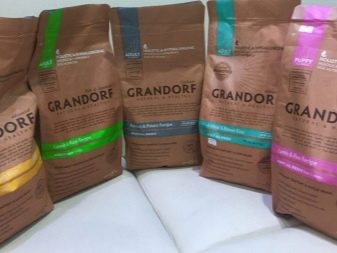
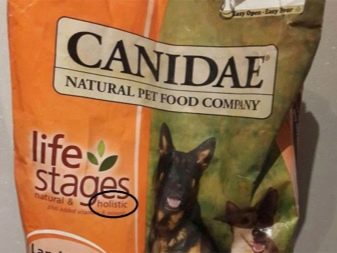
Wet food is recommended for puppies, animals that have undergone surgery and are recovering from illness. However, you should not feed your dog wet food for a long time. The fact is that for the health of their nervous system, jaws and cleaning of their teeth, the dog must eat solid food. Periodically, an adult pet can be pampered with wet food, but the basis of its diet is granules.
Growing puppies from 2-3 months should also be transferred to dry granules, but first they can be soaked in water.
The size of the pellets depends on which dog breed the product is being produced for. For decorative pets, the food is usually smaller, as their jaw system requires.

See below for the features of the holistic class feed.
Manufacturers overview
Consider low protein foods that are popular with breeders and recommended by veterinarians.
Animonda Rafine Soupe Adult
Hypoallergenic food from a well-known brand. It is this line that contains the minimum possible amount of protein - only 8%. It is sourced from chicken and duck and is considered hypoallergenic.

Vom feinsten
A brand exclusively dedicated to the production of reduced protein feed. In different types of feed, this indicator varies from 22 to 8%. For dogs with allergies, as well as older pets, choose food with a rabbit.
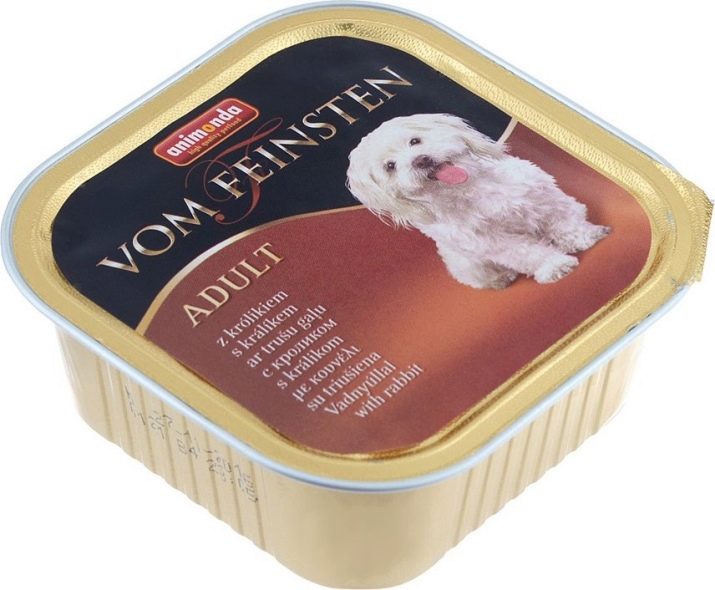
Acana
The food of this brand has a low-protein variety, characterized by nutritional value and a balanced composition. There is no soy in the feed, there is grain-free products.
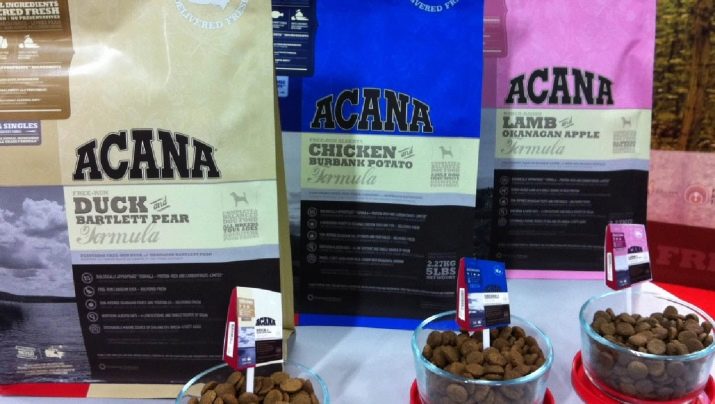
Royal canin
This manufacturer should pay attention to the line Eukanuba Renal. This food is considered medicinal and is prescribed for kidney diseases, but it is also suitable for those pets in whose diet you need to reduce the amount of protein.

Golden eagle holistic
Low-protein holistic with an animal protein content (22%). The product line is wide enough, so it will not be difficult to choose products. Foods are very popular based on rabbit and duck. Brown rice and dried vegetables play the role of carbohydrates; herbs, vitamin and mineral supplements are also present in the feed.
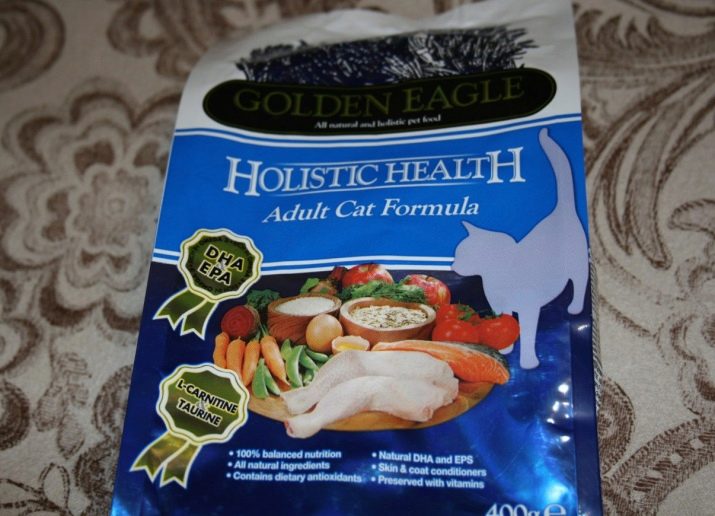
How to choose?
It is a misconception of some breeders that an animal needs animal protein, not plant protein.However, they are sometimes present in feed in almost equal proportions.
However, for dogs with arthritis and similar diseases, as well as for the elderly, the animal protein intake should not exceed 5%. The rest of the pet's need for protein is completely "covered" by vegetable protein.
But for adult active pets, lactating and pregnant females, growing puppies, the norm of animal protein is at least 30%, the rest (10-20%) can be vegetable.
At the same time, it is important to pay attention to the quality of the feed, in its composition the first ingredient should still be animal protein (exactly what type of meat is used). In second place is vegetable protein.
The exception is medicinal varieties of feed, where vegetable protein is allowed as the main one.
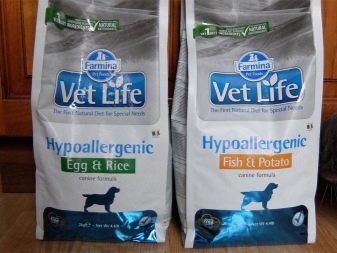
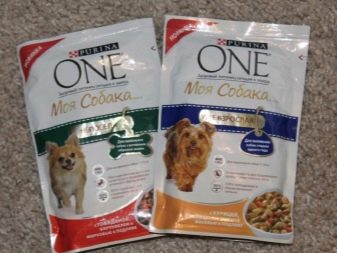
But in economy feed, vegetable protein predominates, however, in their amino acid composition, vegetable and animal proteins differ. In particular, the former lacks the essential amino acids tryptophan, methionine and others. With prolonged feeding with such food, the animal begins to have severe protein metabolism disorders, which affects all body systems. It is the long-term "diet" on economy-class forages that leads to the development of protein allergy.
If the feed contains "hydrolyzed protein", it is not dangerous. The process of hydrolysis is understood as the breakdown of complex proteins into simpler and more easily digestible ones. As a result, complex proteins, for example from beef, are easier to digest and do not provoke allergies.
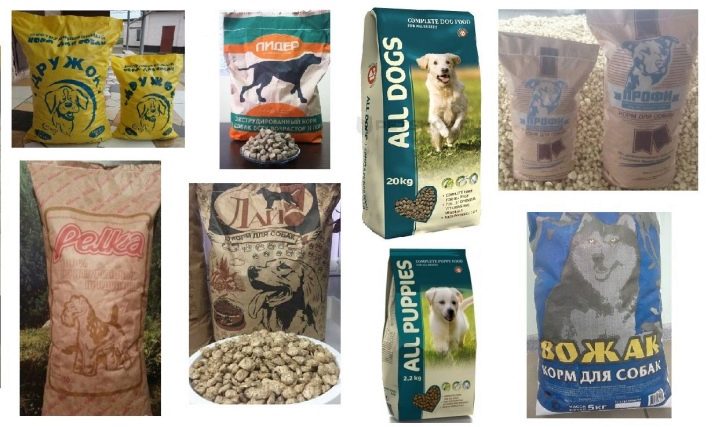
Despite the complexity and cost of the hydrolysis process, the products remain fairly affordable. Typically, hydrolyzed protein is found in super-premium formulations, some premium feeds.
Although low-protein foods put less strain on the kidneys and liver, it is important that the pet always has access to clean drinking water. Animals who eat dry food require more water than those who eat wet food. Canned food contains a lot of moisture, which partially compensates for the animal's body need for liquid.






































